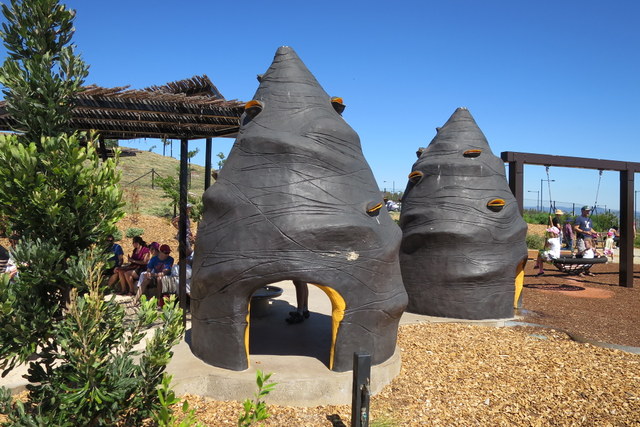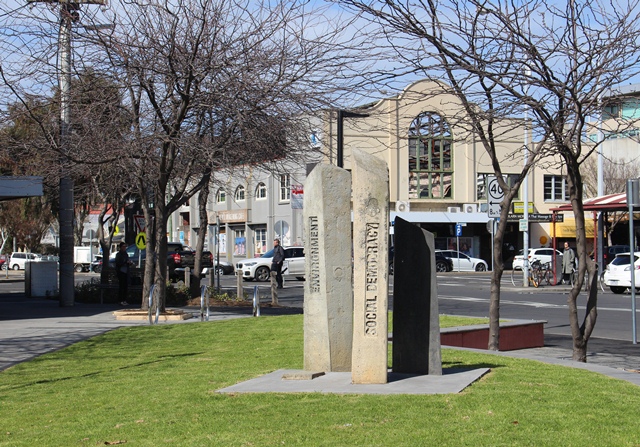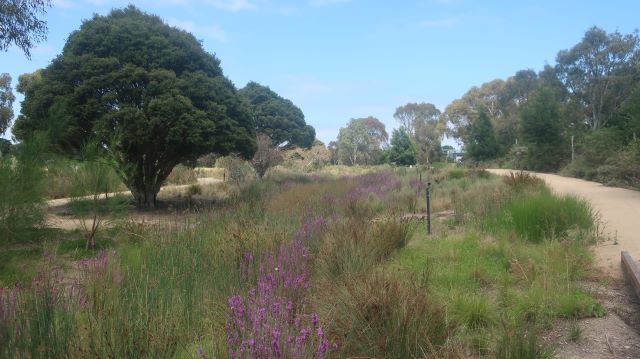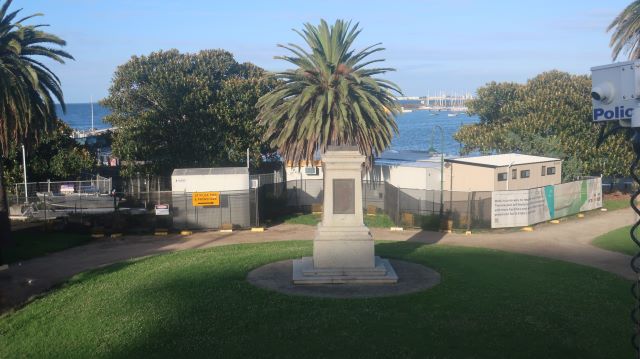
Capital Trees
250 hectares: 48,000 trees in 94 forests
In the week Joe Hockey released the 2015 Intergenerational Report, Port Places visited an intergenerational project of a more hopeful kind – the National Arboreturm Canberra.
Boldly conceived in 2003 after the Canberra bushfires ravaged the area, the project was opened in 2013. It is a project without an end date.
We entered the Arboretum on foot, a bit like pilgrims, zig zagging up the hill to the building on the summit of the hill.
For now, the centrepiece of the Arboretum is The Village, a pedestrian name for the building designed by Tonkin Zulaikha Greer. It is at once on top of the hill and part of the hill. It spaciously accommodates all the hospitality, information and bookshop functions. The informing ideas behind the design, the cues picked up from the original Burley Griffin design for Canberra, are all beautifully described by Christopher Vernon here.
No photograph? The scale and scope of the project defied my compact camera. That is why I recommend looking at the links provided below.
The Arboreturm has been called a ‘Noah’s ark’ for trees, a botanic ark. It also reminded me of a game reserve, so large, that a car is needed to see it all. It would be good to have bikes available to enable bike exploration.
The trees were selected by an expert panel from an international listing of all trees considered endangered by the International Union for the Conservation of Nature. Further selections were made based on conservation and/or symbolic value, as well as their ability to provide seasonal colour and habitat for local wildlife.
The delightful Pod playground has acorns and burnt banksia cones as a theme. How were those banksia seed openings so authentically achieved?
Paradoxically, at this time there is little shade, save in the two stands of 100 year old trees some distance from the Village.
The Arboreturm is about
‘conservation, hope, knowledge, symbolism, beauty and particularly about time.’
‘By planting and nurturing the forests, we are helping to ensure their survival, learning about them and the ways they respond to our changing climate, and creating a beautiful public space to be enjoyed by future generations.’
The Arboretum is a visionary project at a time when the word ‘vision’ has lost its value through overuse.
I returned to Melbourne, with trees on my mind. The City of Melbourne is preparing Urban Forest precinct plans for Southbank and for Fishermans Bend. They are inviting us to breakfast to talk trees.
Right now you can look at the trees in Fishermans Bend on the Urban Forest map. Apart from along Lorimer Street, there are great tree deserts.
There is an urgency about this work.
The City of Melbourne anticipates the loss of 27 per cent of its current tree population in the next decade and 44 per cent in the next 20 years.
In response, the City is planning to plant many many more trees to cool the city. It aims to plant a diversity of species – not to over rely on any one.
Do accept their invitation to talk trees.
Read more
about the architecture of the Arboretum
Christopher Vernon 27 September 2013 : National Arboretum Canberra in Australian Design Review
For some stunning images go to
World Architecture Festival – Landscape of the Year 2014
about the 100 forests
National Arboretum Canberra Map and list of the 100 forests




Leave a Reply